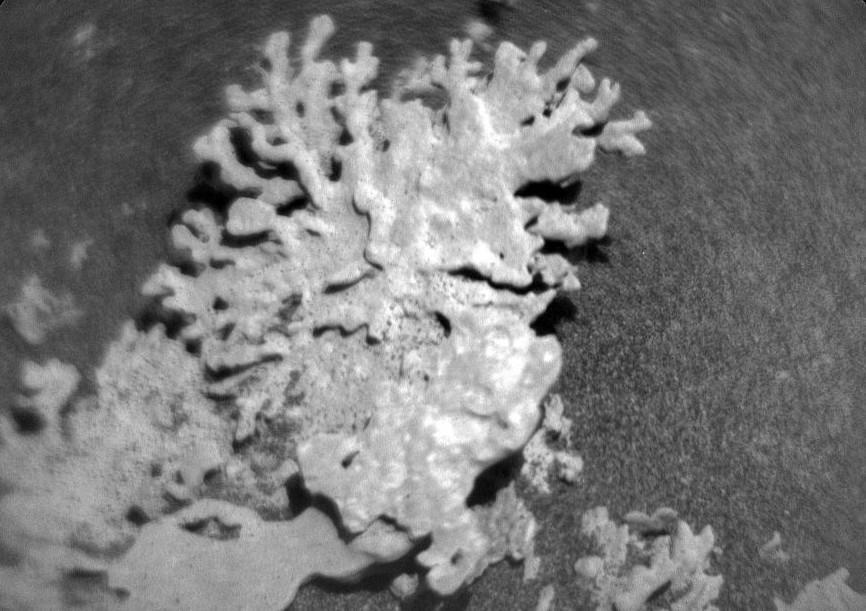
Coral-shaped rock spotted on Mars, NASA shares pic
In a fascinating discovery, NASA’s Curiosity Mars rover has sent back stunning black and white images of a rock on the Martian surface that bears an uncanny resemblance to a piece of coral. The rock, which was found in the Gale Crater, a large impact basin on Mars, is estimated to be around a billion years old.
The Curiosity rover, which has been exploring Mars since 2012, has been instrumental in uncovering the Red Planet’s geological secrets. Equipped with a suite of scientific instruments, the rover has been able to analyze the Martian surface and subsurface in unprecedented detail.
The coral-shaped rock, which measures about 3.5 inches (9 centimeters) in length, is a remarkable find, not only because of its unusual shape but also because it provides valuable insights into Mars’ geological history. The rock, which is believed to have formed through the interaction of water and minerals, is thought to have been deposited in the crater millions of years ago.
The discovery of the coral-shaped rock is significant because it suggests that Mars may have had a watery past, with conditions that were suitable for life to exist. While there is currently no conclusive evidence of past or present life on Mars, the discovery of ancient waterways and lakes has led scientists to speculate about the possibility of microbial life on the Red Planet.
The Curiosity rover has been equipped with a variety of instruments designed to study the Martian surface and subsurface. One of these instruments, called ChemCam, uses a high-powered laser to vaporize small samples of rock, which are then analyzed by a spectrometer. This technology allows scientists to determine the chemical composition of the rock and learn more about its history.
In the case of the coral-shaped rock, ChemCam was used to analyze the rock’s composition and determine its age. The results revealed that the rock is made up of a combination of iron-rich minerals, including magnetite and hematite, which are common on Mars. The analysis also suggested that the rock is around a billion years old, which is significant because it provides a window into the Martian surface’s geological past.
The discovery of the coral-shaped rock is just the latest in a long series of exciting finds made by the Curiosity rover. Since its arrival on Mars, the rover has discovered evidence of ancient lakes and rivers, as well as minerals that are common on Earth but rare on Mars.
The Curiosity rover’s mission is ongoing, with the rover continuing to explore the Martian surface and uncover its secrets. As new discoveries are made, scientists will be able to learn more about the Red Planet’s history and the potential for life on Mars.
For now, the discovery of the coral-shaped rock is a fascinating reminder of the wonders that await us on the Red Planet. As NASA continues to explore Mars and uncover its secrets, we may yet discover evidence of past or present life on the Red Planet.
Source: https://www.jpl.nasa.gov/images/pia26634-curiositys-chemcam-views-a-rock-shaped-like-coral/






